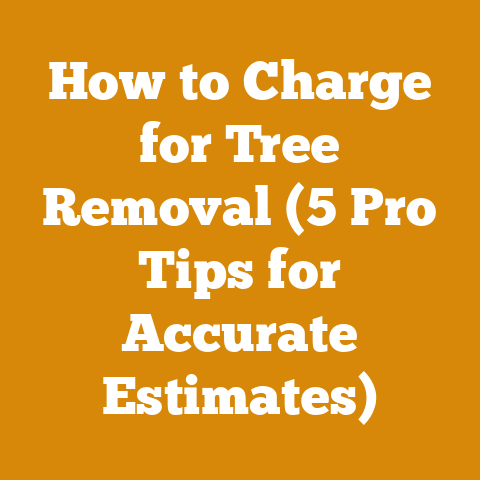Boot Epoxy Protection (5 Pro Tips for Durable Firewood Boots)
Boot Epoxy Protection (5 Pro Tips for Durable Firewood Boots)
It’s a familiar sight, isn’t it? You’re out there, splitting wood, stacking cords, or trekking through muddy logging trails, and your boots are taking a beating. The soles are peeling, the leather is cracking, and the seams are splitting. You’ve probably thought, “There has to be a way to make these things last longer!” The truth is, firewood prep and logging are tough on footwear. I’ve personally seen more than my fair share of boots fall victim to the elements and the relentless strain of the job. That’s why I started exploring ways to reinforce and protect my own work boots, and epoxy became my go-to solution.
Understanding the Need for Boot Protection
Before diving into the how-to, let’s address the ‘why’. Why is boot protection so crucial, especially when working with firewood?
The Harsh Reality of Firewood Work
Firewood preparation is a demanding task. It involves:
- Physical Strain: Lifting, carrying, and splitting wood puts immense stress on your boots.
- Environmental Exposure: Mud, water, snow, and extreme temperatures can degrade boot materials.
- Abrasive Surfaces: Rough terrain, sharp wood edges, and abrasive tools (like chainsaws) can cause significant wear and tear.
I remember one winter where I was cutting and splitting firewood for a friend. The ground was frozen solid, and the constant impact of the splitting maul was shredding the soles of my boots. Within weeks, they were falling apart. That experience taught me the importance of proactive boot protection.
The Cost of Neglect
Failing to protect your boots can lead to:
- Premature Wear and Tear: Boots can deteriorate quickly, requiring frequent replacements.
- Reduced Comfort and Performance: Damaged boots can cause discomfort, blisters, and even injuries.
- Increased Expenses: Replacing boots frequently adds up over time.
Think about it: a good pair of logging boots can easily cost $200-$400. Replacing them every year or two is a significant expense. Investing in proper protection can extend their lifespan and save you money in the long run.
Benefits of Epoxy Protection
Epoxy offers a robust solution for protecting your boots. Here’s why it’s effective:
- Durability: Epoxy creates a hard, durable layer that can withstand abrasion, impact, and chemicals.
- Water Resistance: Epoxy seals the boot, preventing water from penetrating and damaging the materials.
- Flexibility: Some epoxies are flexible enough to move with the boot, preventing cracking and peeling.
- Cost-Effectiveness: A small amount of epoxy can significantly extend the life of your boots.
Tip 1: Selecting the Right Epoxy
Not all epoxies are created equal. Choosing the right one is crucial for achieving optimal boot protection. I’ve experimented with various types over the years, and here’s what I’ve learned:
Types of Epoxy Resins
- General-Purpose Epoxy: Suitable for basic repairs and sealing. It’s readily available and relatively inexpensive. However, it might not be flexible enough for boots that require a lot of movement.
- Flexible Epoxy: Designed to withstand bending and flexing. Ideal for boots that experience a lot of movement. It’s more resistant to cracking and peeling.
- Abrasion-Resistant Epoxy: Formulated to withstand heavy wear and tear. Perfect for boots used in demanding environments.
- Marine Epoxy: Offers excellent water resistance and durability. A good choice for boots that are frequently exposed to moisture.
Factors to Consider
When selecting an epoxy, consider the following factors:
- Flexibility: Choose a flexible epoxy if your boots require a lot of movement.
- Abrasion Resistance: Opt for an abrasion-resistant epoxy if you work in a harsh environment.
- Water Resistance: Select a marine epoxy if your boots are frequently exposed to water.
- Cure Time: Consider the cure time of the epoxy. Some epoxies cure quickly, while others take longer.
- Application Method: Choose an epoxy that is easy to apply with the tools you have available.
Recommended Epoxy Brands
Based on my experience, here are some recommended epoxy brands for boot protection:
- Loctite: Known for its high-quality adhesives and epoxies.
- JB Weld: Offers a range of durable epoxies suitable for various applications.
- West System: Specializes in marine epoxies with excellent water resistance.
- 3M: Provides a variety of industrial-grade epoxies for demanding environments.
Cost Comparison
Here’s a rough cost comparison of different epoxy types:
| Epoxy Type | Price Range (per ounce) | Notes |
|---|---|---|
| General-Purpose | \$2 – \$5 | Economical, suitable for basic repairs. |
| Flexible | \$4 – \$8 | More expensive, but offers better flexibility and resistance to cracking. |
| Abrasion-Resistant | \$6 – \$12 | Pricier, but provides superior protection against wear and tear. |
| Marine | \$8 – \$15 | Most expensive, but offers excellent water resistance and durability. |
These prices are approximate and can vary depending on the brand and retailer. It’s always a good idea to shop around and compare prices before making a purchase.
Tip 2: Preparing Your Boots for Epoxy Application
Proper preparation is key to ensuring the epoxy adheres correctly and provides long-lasting protection. I’ve learned the hard way that skipping this step can lead to premature peeling and cracking.
Cleaning and Degreasing
- Remove Dirt and Debris: Use a stiff brush to remove any dirt, mud, or debris from the boots.
- Wash with Soap and Water: Wash the boots with mild soap and water to remove any remaining dirt and grime.
- Degrease the Surface: Use a degreasing agent (like isopropyl alcohol or acetone) to remove any oils or waxes from the boot surface. This is crucial for ensuring proper adhesion.
I once tried applying epoxy to a pair of boots without properly degreasing them. The epoxy peeled off within a week. Lesson learned!
Sanding the Surface
- Use Sandpaper: Use medium-grit sandpaper (120-180 grit) to lightly sand the areas where you’ll be applying epoxy. This creates a rough surface that the epoxy can grip onto.
- Focus on High-Wear Areas: Pay special attention to the areas that experience the most wear and tear, such as the soles, heels, and toe caps.
- Remove Sanding Dust: Use a clean cloth or compressed air to remove any sanding dust.
Drying the Boots
- Allow to Air Dry: Allow the boots to air dry completely before applying epoxy. This can take several hours or even overnight.
- Use a Hair Dryer (Optional): If you’re in a hurry, you can use a hair dryer to speed up the drying process. Be careful not to overheat the boots, as this can damage the materials.
Tip 3: Applying Epoxy Like a Pro
Applying epoxy correctly is essential for achieving a durable and long-lasting protective layer. Here’s how to do it like a pro:
Mixing the Epoxy
- Follow Manufacturer’s Instructions: Always follow the manufacturer’s instructions for mixing the epoxy. This is crucial for ensuring the epoxy cures properly.
- Use the Correct Ratio: Use the correct ratio of resin to hardener. Too much or too little of either can affect the epoxy’s properties.
- Mix Thoroughly: Mix the epoxy thoroughly until it is smooth and uniform. Use a mixing stick or a power mixer for best results.
- Avoid Air Bubbles: Try to avoid introducing air bubbles into the epoxy while mixing. Air bubbles can weaken the epoxy and create imperfections in the finish.
Application Techniques
- Use a Brush or Applicator: Use a brush, applicator, or syringe to apply the epoxy to the boots. Choose the tool that works best for the specific area you’re working on.
- Apply in Thin Layers: Apply the epoxy in thin, even layers. This allows the epoxy to cure properly and prevents it from running or sagging.
- Focus on High-Wear Areas: Pay special attention to the areas that experience the most wear and tear, such as the soles, heels, and toe caps.
- Overlap the Edges: Overlap the edges of the epoxy to create a seamless and watertight seal.
Working Time and Cure Time
- Understand Working Time: Be aware of the epoxy’s working time. This is the amount of time you have to apply the epoxy before it starts to harden.
- Allow Sufficient Cure Time: Allow the epoxy to cure completely before using the boots. Follow the manufacturer’s instructions for cure time.
- Maintain Proper Temperature: Maintain a proper temperature during the curing process. Most epoxies require a temperature of 60-80°F for optimal curing.
I once rushed the curing process and used my boots before the epoxy was fully hardened. The result? The epoxy cracked and peeled off within days. Patience is key!
Tip 4: Reinforcing High-Wear Areas
Some areas of your boots are more prone to wear and tear than others. Reinforcing these areas with additional epoxy can significantly extend the life of your boots.
Identifying High-Wear Areas
- Soles: The soles of your boots are constantly in contact with the ground and are subject to abrasion and impact.
- Heels: The heels of your boots experience a lot of stress, especially when walking on uneven terrain.
- Toe Caps: The toe caps of your boots are vulnerable to scuffs and impacts.
- Seams: The seams of your boots are prone to splitting and tearing.
Reinforcement Techniques
- Multiple Layers: Apply multiple layers of epoxy to high-wear areas. This creates a thicker, more durable protective layer.
- Fabric Reinforcement: Embed fabric (like fiberglass cloth or canvas) into the epoxy to add strength and durability.
- Filler Materials: Add filler materials (like silica or microballoons) to the epoxy to increase its thickness and abrasion resistance.
Case Study: Sole Reinforcement
I had a pair of logging boots with soles that were wearing down quickly. To reinforce them, I applied three layers of abrasion-resistant epoxy to the soles. I also embedded fiberglass cloth into the first layer of epoxy to add extra strength. The result was a much more durable sole that lasted for years.
Tip 5: Maintaining Your Epoxy-Protected Boots
Protecting your boots with epoxy is just the first step. Proper maintenance is essential for ensuring the protective layer lasts as long as possible.
Regular Cleaning
- Remove Dirt and Debris: Regularly remove dirt and debris from your boots with a brush or cloth.
- Wash with Soap and Water: Wash your boots with mild soap and water to remove any grime or stains.
- Avoid Harsh Chemicals: Avoid using harsh chemicals or solvents, as these can damage the epoxy.
Inspecting for Damage
- Check for Cracks and Peeling: Regularly inspect your boots for cracks, peeling, or other signs of damage.
- Repair Damage Promptly: Repair any damage promptly to prevent it from spreading.
Repairing Damaged Epoxy
- Clean the Damaged Area: Clean the damaged area with soap and water and degrease it with isopropyl alcohol or acetone.
- Sand the Surface: Lightly sand the surface with medium-grit sandpaper.
- Apply New Epoxy: Apply a thin layer of epoxy to the damaged area.
- Allow to Cure: Allow the epoxy to cure completely before using the boots.
I once noticed a small crack in the epoxy on my boot sole. I immediately cleaned and repaired it with a fresh layer of epoxy. By addressing the issue promptly, I prevented the crack from spreading and saved myself from having to replace the entire sole.
Cost Considerations: A Deep Dive
Let’s break down the costs associated with boot epoxy protection and compare it to the cost of replacing boots.
Material Costs
- Epoxy: As we discussed earlier, the cost of epoxy can range from \$2 to \$15 per ounce, depending on the type and brand.
- Sandpaper: A pack of sandpaper costs around \$5 – \$10.
- Degreaser: A bottle of degreaser costs around \$5 – \$10.
- Brushes/Applicators: Brushes or applicators can cost around \$5 – \$15, depending on the quality and type.
- Fabric Reinforcement (Optional): Fiberglass cloth or canvas can cost around \$10 – \$20 per yard.
Total Material Costs: \$27 – \$60 (excluding fabric reinforcement)
Labor Costs
- DIY: If you’re doing the work yourself, the labor cost is essentially your time. I estimate it takes around 2-3 hours to properly prepare and apply epoxy to a pair of boots.
- Professional Application: If you’re hiring a professional to apply the epoxy, the labor cost can range from \$20 – \$50 per hour.
Total Labor Costs: \$0 – \$150 (depending on DIY vs. professional)
Total Cost of Epoxy Protection
DIY: \$27 – \$60 (materials) + \$0 (labor) = \$27 – \$60
Professional: \$27 – \$60 (materials) + \$20 – \$50 (labor) = \$47 – \$110
Cost of Replacing Boots
- Budget Boots: \$50 – \$100
- Mid-Range Boots: \$100 – \$250
- High-End Boots: \$250 – \$500+
Cost-Benefit Analysis
Let’s assume you have a pair of mid-range boots that cost \$150 and typically last for one year. By investing \$50 in epoxy protection, you can potentially extend their lifespan to two years.
- Cost of Replacing Boots Every Year: \$150 per year
- Cost of Epoxy Protection + Extended Boot Lifespan: \$50 (epoxy) + \$150 (boots) = \$200 over two years, or \$100 per year.
In this scenario, epoxy protection saves you \$50 per year.
Key Cost Components
- Timber Purchase or Harvesting Costs: This includes the cost of purchasing timber or the expenses associated with harvesting trees from your own property.
- Timber Prices: Timber prices vary widely depending on the species, quality, and location. According to the USDA Forest Service, the average stumpage price (the price paid to the landowner for standing timber) for sawtimber in the United States in 2022 was \$258 per thousand board feet (MBF). However, prices can range from \$50 per MBF for lower-quality species to \$500+ per MBF for high-value species like black walnut.
- Harvesting Costs: Harvesting costs include the expenses associated with felling, skidding, and loading trees. These costs can range from \$50 to \$150 per MBF, depending on the terrain, the size of the trees, and the equipment used.
- Tool Costs: This includes the cost of purchasing or renting chainsaws, splitters, and other tools.
- Chainsaw Costs: Chainsaws can range in price from \$200 for a basic homeowner model to \$1,500+ for a professional-grade logging saw.
- Splitter Costs: Log splitters can range in price from \$500 for a small electric model to \$5,000+ for a heavy-duty hydraulic model.
- Rental Fees: Renting tools can be a cost-effective option for occasional users. Chainsaw rental fees typically range from \$30 to \$50 per day, while log splitter rental fees can range from \$50 to \$100 per day.
- Tool Maintenance: This includes the cost of maintaining your tools, such as sharpening chainsaws, replacing parts, and servicing equipment.
- Chainsaw Sharpening: Chainsaw sharpening typically costs \$10 – \$20 per sharpening.
- Parts Replacement: The cost of replacing chainsaw parts can vary widely depending on the part and the model of the saw.
- Equipment Servicing: Regular servicing of equipment can help prevent costly repairs down the road.
- Labor Wages: This includes the cost of paying yourself or hiring a logging crew or firewood handlers.
- Logging Crew Wages: Logging crew wages vary depending on the location, the experience of the crew, and the type of work being performed. According to the Bureau of Labor Statistics, the median annual wage for logging workers in the United States in May 2022 was \$46,840.
- Firewood Handler Wages: Firewood handler wages typically range from \$12 to \$20 per hour.
- Permits (If Applicable): This includes the cost of obtaining any necessary permits for harvesting timber or selling firewood.
- Timber Harvesting Permits: Timber harvesting permits may be required in some areas. The cost of these permits can vary depending on the location and the size of the harvest.
- Firewood Sales Permits: Firewood sales permits may be required in some areas. The cost of these permits can vary depending on the location and the volume of firewood being sold.
- Fuel Costs: This includes the cost of fuel for chainsaws, splitters, and other equipment.
- Chainsaw Fuel: Chainsaw fuel typically costs \$3 – \$5 per gallon.
- Splitter Fuel: Log splitters can use gasoline or diesel fuel. The cost of fuel will depend on the type of splitter and the current fuel prices.
- Transportation Costs: This includes the cost of transporting timber or firewood.
- Trucking Costs: Trucking costs can vary depending on the distance, the weight of the load, and the type of truck being used.
- Fuel Costs: Fuel costs for transportation can be significant, especially for long distances.
- Drying Costs: If you’re selling firewood, you’ll need to factor in the cost of drying the wood.
- Kiln Drying: Kiln drying is a faster but more expensive method of drying firewood.
- Air Drying: Air drying is a slower but less expensive method of drying firewood.
Example Budget
Let’s create an example budget for a small-scale firewood operation.
Assumptions:
- You’re harvesting timber from your own property.
- You’re using a chainsaw and a log splitter.
- You’re selling firewood locally.
Budget:
- Timber Harvesting Costs: \$100 (permit fees, etc.)
- Tool Costs: \$0 (you already own the tools)
- Tool Maintenance: \$200 (chainsaw sharpening, parts replacement)
- Labor Wages: \$0 (you’re doing the work yourself)
- Fuel Costs: \$300 (chainsaw and splitter fuel)
- Transportation Costs: \$100 (trucking firewood locally)
- Drying Costs: \$0 (you’re air-drying the firewood)
Total Costs: \$700
Revenue:
- You’re selling 10 cords of firewood at \$200 per cord.
- Total Revenue: \$2,000
Profit:
- Total Profit: \$2,000 (revenue) – \$700 (costs) = \$1,300
Tips for Cost Optimization
- Shop Around for Timber: Compare timber prices from different suppliers to get the best deal.
- Maintain Your Tools: Regularly maintain your tools to prevent costly repairs.
- Use Fuel-Efficient Equipment: Use fuel-efficient chainsaws and splitters to reduce fuel costs.
- Air Dry Firewood: Air drying firewood is a less expensive option than kiln drying.
- Sell Locally: Selling firewood locally can reduce transportation costs.
Calculating Volume of Logs
- Board Feet: Board feet are a common unit of measure for timber. One board foot is equal to a piece of wood that is 1 inch thick, 12 inches wide, and 12 inches long.
- Cords: Cords are a common unit of measure for firewood. One cord is equal to a stack of wood that is 4 feet high, 4 feet wide, and 8 feet long.
Formula for Calculating Board Feet:
- Board Feet = (Thickness in inches x Width in inches x Length in feet) / 12
Formula for Estimating Cords:
- Cords = (Volume in cubic feet) / 128
Estimating Drying Time
The drying time for firewood depends on several factors, including the species of wood, the size of the pieces, and the climate.
General Guidelines:
- Softwoods (e.g., pine, fir): 6-12 months
- Hardwoods (e.g., oak, maple): 12-24 months
Formula for Estimating Drying Time:
- Drying Time (months) = (Initial Moisture Content – Target Moisture Content) / Drying Rate
Note: The drying rate will vary depending on the climate and the drying conditions.
Actionable Takeaways and Next Steps
So, where do you go from here? Here are some actionable takeaways and next steps to help you protect your firewood boots and manage your wood processing projects effectively:






